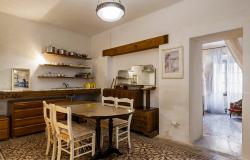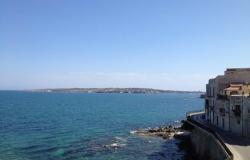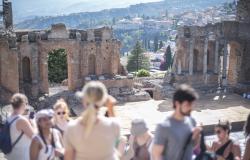For those looking for a bit of a thrill, and a different Sicilian experience, consider hiking to the top of a volcano. Here are three you can climb.
Mount Etna, Sicily
Towering above Catania on the east coast of Sicily, Mount Etna is Europe’s highest and most active volcano.
The volcano is comprised within the 59,000 hectares of the Etna Park, which attracts thousands of adventure- and nature-loving tourists every year.
The classic way to reach the summit craters is from the Sapienza hut (1,923 meters), which you can reach by car. From there, you have different options:
- You can use the cableway which takes you to an elevation of 2,500 m; from there, you can access the crater area at 2,920 m. Therefore you have approximately a 400-meter elevation gain.
- You can go on an organized tour that uses 4x4 jeeps.
- You can hike from the Sapienza hut to the summit craters on designated trails; this is the most challenging option because you have a 1,000-meter elevation gain.
Always consider hiring a local guide.
During eruptions, guided trips may be organized at night to admire the bursts of lava.
For more about Mount Etna, read our dual language article and practice your Italian!
Stromboli, Sicily
Stromboli is an island off the north-eastern coast of Sicily, part of the Aeolian Islands, which all have a volcanic origin. The conical shape of the island is itself the volcano, which shares the name.
Stromboli is 930 meters high, while the base is located more than 2,000 meters under the sea. Volcanic activity is steady, with explosions every 15-30 minutes; despite this, along the slopes a thick vegetation and several species of birds survive.
To hike up Stromboli, you have to hire a certified guide and sign a liability waiver. You cover a 900-meter elevation gain, with several sandy and steep sections, and numerous steps. It is a hike best suitable for well- trained travelers.
Vulcano, Sicily
Vulcano is also part of the Aeolian islands, but lower than Stromboli, having an altitude of 390 meters. As in Stromboli, the landscape is green and there are large black sandy beaches.
Hikes to the crater are much easier to tackle than Stromboli and Etna. You walk three to four hours amid expanses of black sand and red clay tuff, fumaroles and sulfur that give the landscape a lunar appearance.
A strong smell of sulfur indeed accompany you to the top of the crater together with columns of gas and smoke seething from the ground. For this reason, it is necessary to wear glasses and carry tissues; protective masks to avoid gas inhalation are provided free of charge by the guides.








